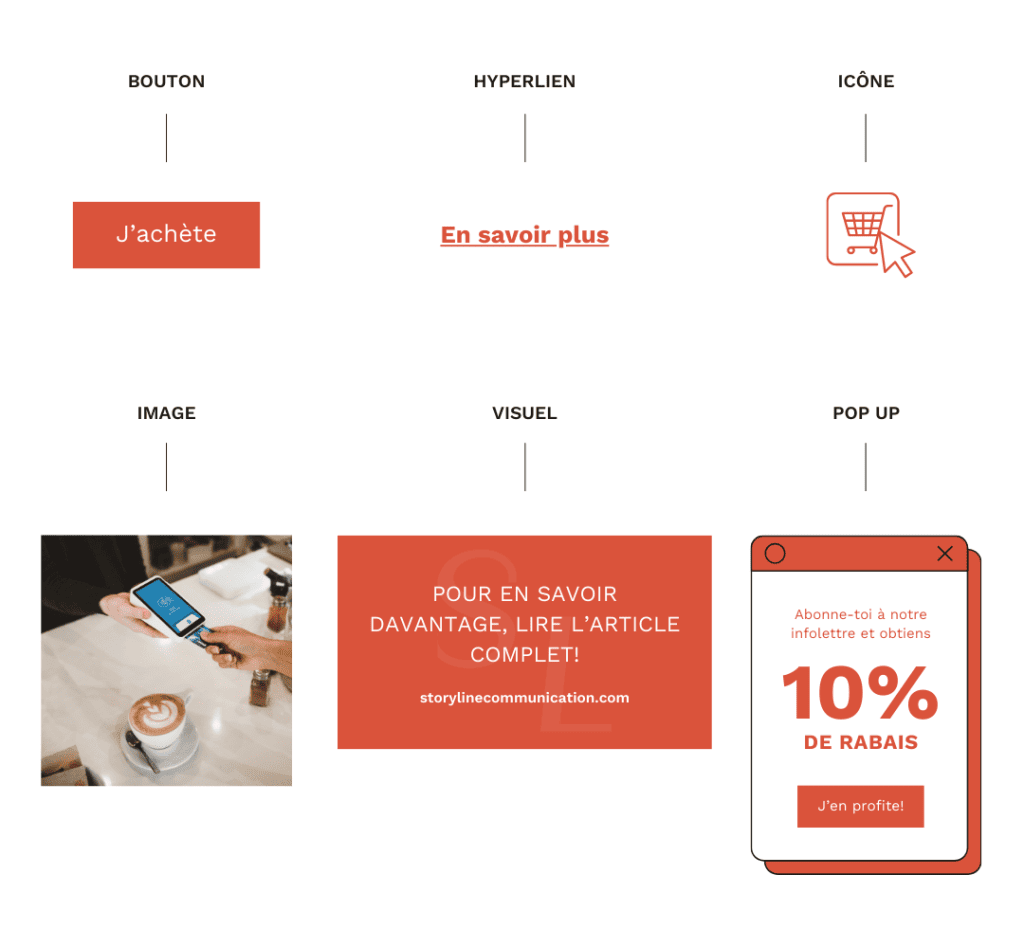More creative and engaging call-to-actions: the call-to-value approach
Setting the scene
Calls-to-action are extremely important in an inbound marketing strategy, as they have a direct impact on your conversion rate.
Whether your objective is to increase your sales, your subscriber base, your visitor rate, or something else, it’s calls-to-action that will encourage prospects to take the desired action. As a result, you’ll obtain specific, measurable data, which, let’s not forget, is a gold mine in business. #informationispower

However, prioritizing calls-to-action doesn’t necessarily mean they’ll be successful. In this age of globalization, competitors are playing “rough around the edges”, and consumers are being bombarded with advertising, information, images and newsletters… So how do you differentiate yourself and achieve your goals?
Call-to-action (CTA)
A call-to-action is a method of encouraging consumers to take immediate action.It is an invitation (from the company) to a consumer to take the desired action; subscribe to the newsletter, go to the website, buy a product, etc. Calls-to-action can take many forms, the most commonly used being: buttons, hyperlinks/bit.ly, pop-ups, images, graphics or icons.

These are proven means of achieving desired objectives. However, they are rapidly losing their value in terms of functionality. Why is this? Because they are “transactional” incentives, often using imperative verbs such as “order now” or “subscribe”. Although these incentives are very clear and precise, they don’t necessarily mean commitment, because they don’t show the real value of the action. That’s why, in some cases, a call-to-action isn’t enough. A simple hesitation on the part of the consumer can cost you a conversion… and much more, such as future sales, a loyal customer, referrals, additional subscribers, and so on. It all depends on the CTA’s intended action.
The call-to-value approach is therefore a solution to counter the negative aspect of the CTA.
Call-to-value (CTV)
To put it simply, call-to-value is a better version of call-to-action. In effect, both have the same utility, but call-to-value provides a value proposition in addition to the action to be taken. This can make the difference between taking immediate action or not. To buy or not to buy, for example.

If calls-to-action are “transactional”, then calls-to-value are “emotional”, because we want to strike a chord and establish a link between the consumer and the benefit of the action. This type of incentive is much softer than a call-to-action, as it doesn’t use imperative verbs. The first person “I” is favored to reach the reader and make him or her feel challenged. For example: “I’m getting ready for summer”, “I can’t live without it”. Promises can also grab people’s attention. For example: “Loose 5 pounds in one week” (although we don’t recommend this… it’s just an example).
However, you need to be able to target your consumers (your persona), because a call-to-value that doesn’t match the values of this target would be useless.
Caution! We’re not saying that it’s always better to use calls-to-value! Calls-to-action are still powerful tools that work in many strategies. You just need to be able to tell the difference between these 2 incentives, understand them and know when to use them. It’s all a question of balance.

We can’t stress this enough, but the most important thing when creating a CTA or CTV is your visitors, your potential customers.
Putting it into practice
Here are a few examples that highlight the difference between a call-to-action and a call-to-value:
Example 1
Action: Buy SPF 50 sunscreen
Target: people who sunburn quickly in summer
CTA: Discover our varieties!
Vs.
CTV😉Two days before the heat wave!
*This call-to-value creates a link with current events and reaches a certain group of people; those who want to protect themselves from the sun. This link creates value for the customer, and the real value of the share is clearly understood.
Example 2
Action: Buy a pair of tickets for the Céline Dion concert
Target: Céline Dion fans
CTA😉: Buy your tickets now! *
Vs.
CTV: I’ll go where you go!
*Here, we’re targeting Céline Dion fans. We don’t necessarily need to play on emotion to get a sale.
Example 3
Action: Buy an X gift for Father’s Day
Target: Children
CTA: Order now!
Vs.
CTV😉: The favourite choice of 85% of dads!
*Here, we don’t know which dads will like this gift, so an impersonal call-to-action isn’t relevant. On the other hand, it’s interesting to use a quantifiable call-to-value. In this example, it’s more likely to reach the buyer by making him realize that this is a good gift idea for his father.
Question: CTA or CTV?
Action: Subscribe to newsletter
Target: Company customers
CTV: Receive promotional offers!
or
CTA: I subscribe!
*We’ll let you guess!
In short, try to be original and creative, it could pay off.





